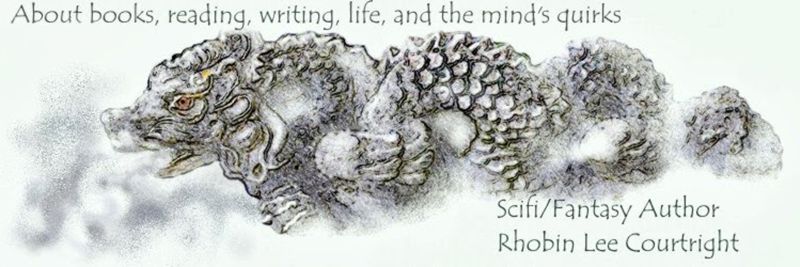 The difference between fiction and reality? Fiction has to make sense. – Tom Clancy, suspense novelist, 1947-2013.
The difference between fiction and reality? Fiction has to make sense. – Tom Clancy, suspense novelist, 1947-2013.This month's topic is about how to make a story feel more realistic to the reader and what elements achieve this.
 In most novels establishing reality isn't hard. The author develops characters representing specific people in specific locations and times; then they add plot lines readers can relate to in some way.
In most novels establishing reality isn't hard. The author develops characters representing specific people in specific locations and times; then they add plot lines readers can relate to in some way.So what is reality? Merriam Websters defines it as the state of being real, a real event, entity, or state of affairs, and the totality of real things and events.
We all know we live on the planet Earth, share the same sun and moon, and see the same galaxy at night. We share Earth with seven billion other humans, so we believe we are real and know the reality of where we dwell and what we do there. Humans have very similar requirements for living, particularly water, food, sleep, and personal relationships. We are social creatures who share similar emotions. We have interactions with other real people and experience many real, even if odd, situations, and we often enjoy telling others about them and hearing their strange events. However, each of us knows the reality of a different place, its weather, family, society norms, education, and living conditions, so our realities vary. We are also different from our past populations' reality as ever-shifting time changes the basic reality of life on this planet and will continue to do so until the species or planet dies. It might be that experiencing the realities of others, even fictional characters in stories make us appreciate our own reality, or change our mental knowledge and images of others and their reality. And don't even go into the bizarre concepts involved in quantum physics reality.
In most genres, authors are writing about real locations and standard human types. Only science fiction, fantasy, and horror introduce situations and characters with powers beyond the basic human scope, but even the strangest characters often share well-known human characteristics. However, my previous post on “How Far Can Fantasy Go?” mentions how people enjoy the unbelievable and have enjoyed fantasy stories far longer than our know stories. Witches, demons, mythological gods, and monsters of various ilk, have been stars in stories forever. Today it only takes the writer's imagination to create a world, and the reader's imagination to believe it. Besides that, everyone knows of situations where the ordinary world became extraordinary in special circumstances.
Reality in Characters: A growing quantity of anthropological proof declares the basic human, i.e. physical, mental, emotional aspects, haven't changed that much from prehistorical times. That means whatever time frame you read or write in, human responses remain the same. Most authors' characters run the huge gamut of the understandable traits and responses of both sane and insane people. Yet sometimes characters can be written to be too good which raises readers' suspicions as they know we all have flaws and insecurities that can drive our reactions. Insanity can reach unfathomable unrealities but still be believable. For me, however, the author can reach such a level of improbability, reality falls away. I’m reading a story now with a killer who wants to protect his illegal industry, but enjoys watching the agony of death, the more anguish and physical pain, the better. I am having trouble reading it. Yet I’ve watched TV shows about serial killers whose practices also seem unreal; unfortunately, the murders they committed happened. So it is possible the previously mentioned characters will have some readers who believe in them. If characters have a full range of emotions, strengths and weaknesses, good traits and bad, the reader will most likely believe them.
 |
| The web and dimensions of reality |
Reality in Plot: This storyline is more difficult as plots can differ in many ways. The key to plot reality is the action and reaction response of the characters due to the action presented in the story. A person’s reaction to a situation differs in real life depending on their personality type and their life issues. The same type of response should be designed into the story’s characters. If a character’s response isn’t what a reader thinks appropriate, then the author needs to build the character’s personality enough for the reader to realize why they acted in a different way from what the reader expected.
Story reality isn’t that difficult until readers encounter those unusual places, events, or characters in a story. Then it is a case of building the story's reality in a step-by-step introduction for each new reality change.
For other viewpoints see the following authors' blogs:
Skye Taylor
Victoria Chatham
Judith Copek
Diane Bator
Dr. Bob Rich
Beverley Bateman
Fiona McGier
Connie Vines
